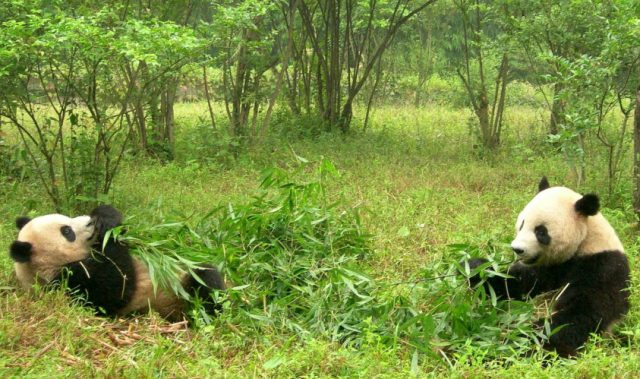
AsianScientist (Aug. 14, 2015) – Scientists have used historical records from China stretching back over 400 years to track changes in the distribution of gibbons, which today are some of China’s most threatened species. This work, published in the Proceedings of the Royal Society B, is one of the first instances of using ancient historical records to reconstruct the course of extinctions across several centuries.
Using local government records dating from as early as 1600 AD, across the Ming and Qing Dynasties and through China’s Republican and Communist periods, researchers were able to infer the former presence of gibbons in different Chinese prefectures, and track their gradual disappearance through time.
Researchers at the international conservation charity Zoological Society of London (ZSL) found that only a few hundred years ago, gibbons were distributed across almost half of China. However, gibbon populations collapsed during the twentieth century, and today they survive in only a few remote forest patches in the far southwest of the country.
One of China’s gibbon species, the Hainan gibbon (Nomascus hainanus), is now probably the rarest mammal species in the world, with a total population of only 26-28 individuals.
Dr. Samuel Turvey, lead author and Senior Research Fellow at ZSL, said: “Gibbons were of great cultural importance in pre-modern China, because they were thought to be able to channel mystical ‘qi energy’ and live for several hundred years, and their haunting dawn calls came to symbolize the melancholy of travelers in classical poetry.
“Their former presence over large regions of China was widely recorded in local documents, and reconstructing when—and why—different gibbon populations disappeared across much of China can teach us important lessons that can help save the country’s last few gibbons.”
“China has a fantastically rich historical record, which includes a wealth of environmental data that has rarely been used for conservation management. Because of the current environmental crisis facing eastern and southeast Asia, we have to explore new ways to better understand the kinds of factors that can make species more or less vulnerable to extinction.”
The article can be found at: Turvey et al. (2015) Historical Data as a Baseline for Conservation: Reconstructing Long-Term Faunal Extinction Dynamics in Late Imperial–modern China.
———
Source: Zoological Society of London; Photo: Leszek Leszczynski/Flickr/CC.
Disclaimer: This article does not necessarily reflect the views of AsianScientist or its staff.












